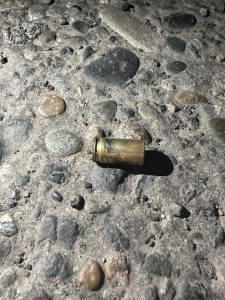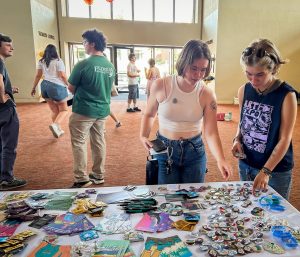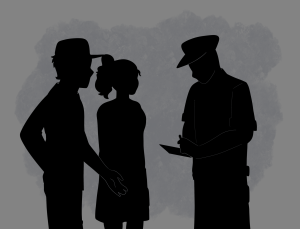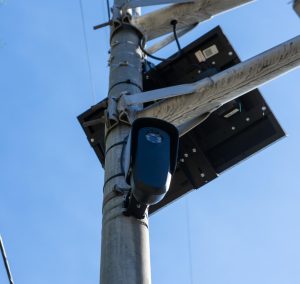Campus exhibits enter final week of the semester
December 8, 2022
What’s going on in Sheehan Gallery? You may walk by the Sheehan Gallery every day on your way in and out of Olin classrooms, but this tucked-away space holds much more than a few art installations for those willing to walk through the door.
This past semester, from Aug. 30 to Dec. 9, the art department and curators Kynde Kiefel and Libby Miller set up their exhibition, “time|creature|portal|self.” Constituted by a variety of mediums and interactive instillations, this exhibit’s mission was to bring people together in the spirit of collaboration and appreciation for artistic expression. Kiefel and Miller’s statement spoke to this idea.
“The artists and scholars featured here emphasize community and collaboration, touching on labor, place, the land that feeds us, resource extraction, non-human animals, teaching, curating, shared experience and care work. We invite you, too, to connect with what you see and through it, to each other,” the statement reads.
Justin Lincoln’s installation, titled “My Weird Data,” was in this vein of observer interaction and allowed for participants to not only observe, but contribute as well.
“This summer was a summer full of Post-it notes. These are especially useful for gathering loose thoughts without judgement or attachment. I see this notational production as a kind of meditative practice,” reads Lincoln’s artist statement. “This Post-it note production may now be more useful to me than journals, notebooks or even computers. I’d encourage you to grab some Post-it notes here and experiment for yourself.”
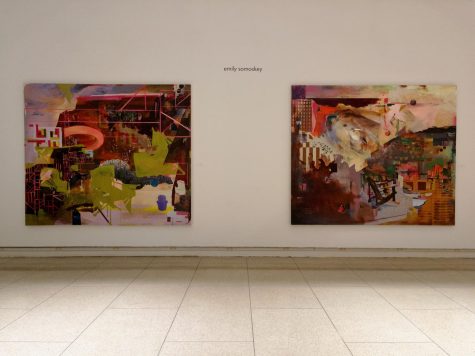
Participants did just that. The interactive installation was a success, as the wall adjacent to Lincoln’s statement was filled from floor to ceiling with Post-it notes; fragments of thought from the minds of students, faculty and appreciators of art adorned the wall.
Senior Ben Daume spoke to how this installation made him more appreciative of the arts in its different mediums.
“The auditory and moving visual aspect of this instillation was definitely interesting to me. It made me appreciate art in its many forms, not just the classic assumptions of artistic mediums, like paintings or photography,” Daume said.
One of the themes in this exhibition was our relationship with the land and how we learn from the animals and environment we live in and interact with. Maria Lux’s piece in Maxey Museum featured a glass casing about half full of taxidermized squirrels and served as a provocation on how we as academics learn from our natural surroundings. Lux spoke on her piece and its meaning.
“Many of the animals chosen were primarily nocturnal, prey animals who are good at hiding or burrowing creatures that most of us wouldn’t even know were there,” Lux said. “Making them visible and learning about them entailed killing them and preserving them in scientifically and historically-grounded ways. I hope that my work asks us to think about ways of producing knowledge and what we gain and lose through different methods.”
Interactive pieces like Lincoln’s coincided with Lux’s work inspiring natural land acknowledgment.
Maxey Museum is home to a diverse set of exhibits of artifacts. You can check out Lux’s piece in Maxey Museum in the auditorium building of Maxey Hall next to the Environmental Studies wing.
If you’ve never been to the Sheehan Gallery, make sure to stop by before Dec. 9 when the exhibition comes to a close. Maybe you’ll find yourself with a Post-it note that holds a new idea or find yourself getting lost in a painting. At the very least, you will get the opportunity to explore an often-neglected corner of Olin Hall that holds much more than meets the eye.



